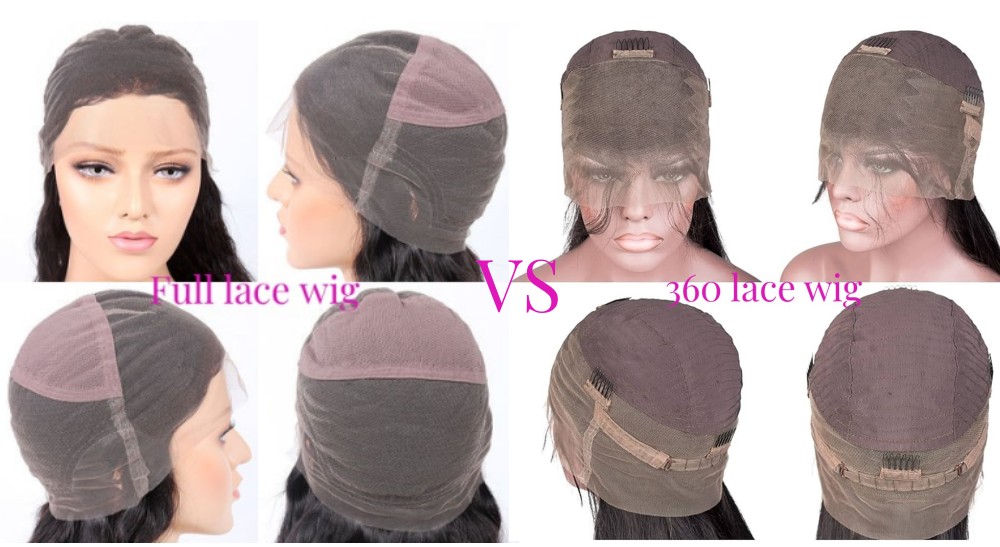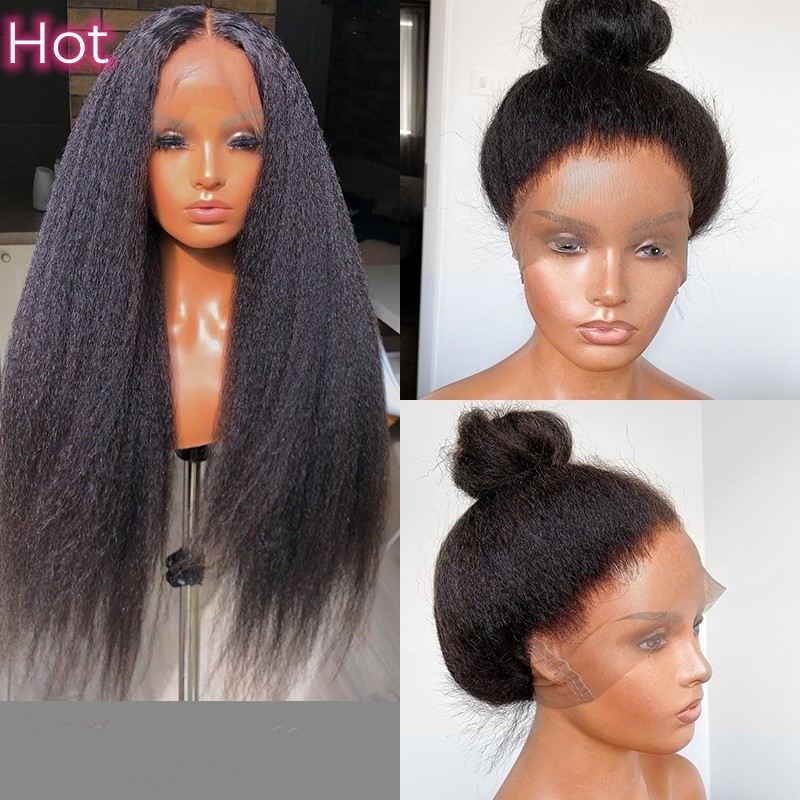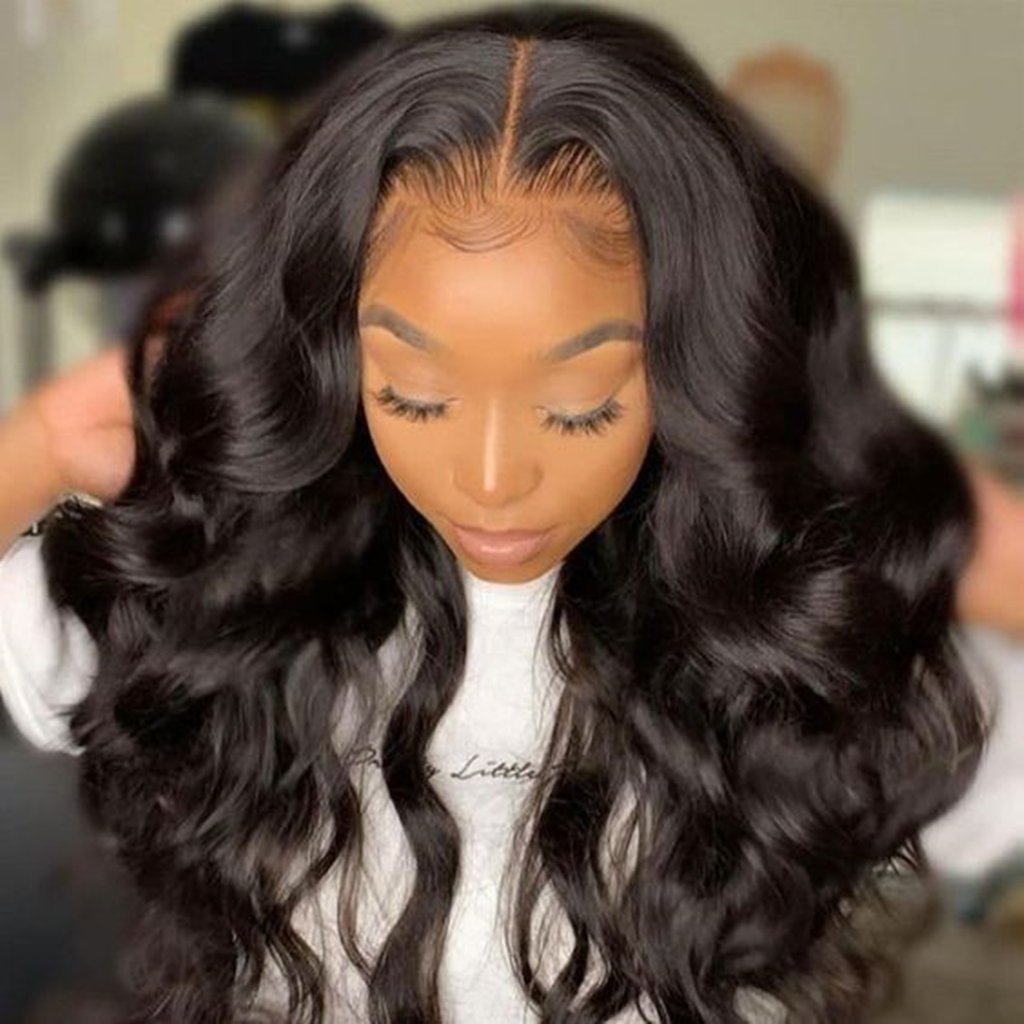Full lace wigs and 360 lace wigs are both popular options for anyone looking to enhance their hairstyle with a seamless, natural appearance.
Full lace wig vs 360 lace wig
Key Differences: Coverage,Density,Shedding,Cap size and Price
Coverage
A full lace wig, as the name suggests, features lace throughout the entire wig cap. This offers extensive coverage, making it possible to part the hair anywhere and style it in countless ways, from ponytails to intricate braids.
On the other hand, a 360 frontal wig provides a lace band that wraps around the edges of the head, covering the hairline. This type of wig allows greater styling flexibility along the perimeter, enabling easy high ponytails and updos. While the center of the cap is usually made of tracks, you can still achieve various parting options but with some limitations.

Full lace wig vs 360 lace wig
Density
Full lace wigs generally come with a standard hair density of around 130%, which is relatively thin compared to the thickness some may desire. However, the wig’s density can extend up to 180% in some versions. Individuals who prefer thicker hair often lean towards 360 frontals because they allow the addition of more hair bundles to enhance fullness. You can easily modify a 360 frontal to suit your preference for thicker hair, making it highly customizable in terms of volume.

Shedding
All wigs eventually experience some degree of shedding due to factors like daily styling, manipulation, and chemical treatments such as bleaching. With a full lace wig, managing shedding can be more challenging once it begins to thin over time since there’s no straightforward means to add more hair. Conversely, a 360 frontal makes managing thinning relatively easier as you can add more bundles to maintain the wig’s desired thickness. This means you’ll have better control over the longevity and appearance of your 360 frontal.
Full lace wig vs 360 lace wig
Cap size
Cap size is a critical consideration when purchasing any wig, and full lace wigs and 360 frontals are no exception.
Since full lace wigs are less adjustable, it’s crucial to measure your head accurately to ensure a proper fit.
Often designed with a more ‘one-size-fits-all’ approach, 360 frontals offer some level of adjustability. If a 360 frontal is too big, you can generally cut and sew it to better fit your head. However, if it’s too small, accommodating it can be trickier. This makes 360 frontals somewhat more flexible but also highlights the importance of selecting a quality product that matches your head size as closely as possible.

Price
Due to their intricate construction, full lace wigs typically have a higher price point.
On the other hand, 360 lace wigs have lace material around the perimeter of the wig, with machine-sewn bundles in the center.
360 lace wigs are generally more affordable than full lace wigs, making them an attractive option for those on a budget. Despite their lower price, they still offer a natural-looking hairline and good styling flexibility. If you’re looking for a balance between cost and versatility, a 360 lace wig might be the ideal choice for you.
Conclusion
Both wig types have their advantages in terms of styling, so your choice will largely depend on your personal styling preferences. If you’re someone who likes changing your part frequently and trying various hairstyles, a full lace wig may be your go-to. If you prefer the sophistication of high ponytails and secure updos, a 360 frontal will likely meet your needs beautifully.
Helpful links: 4 lace types for wigs